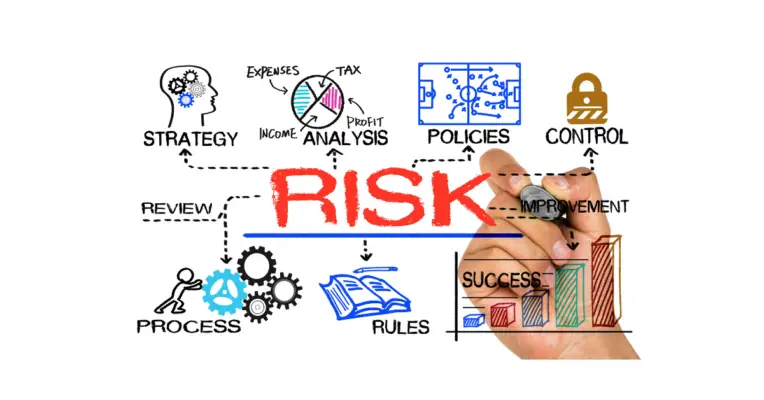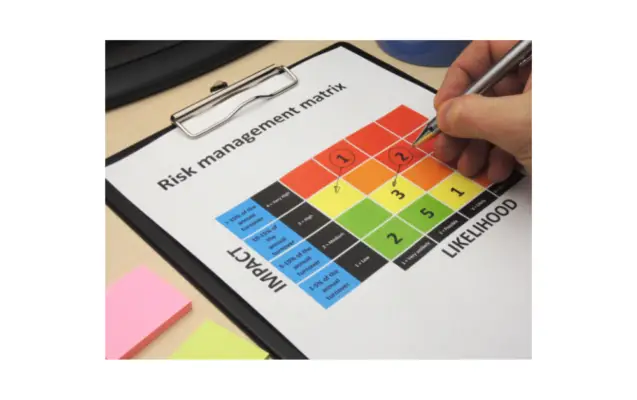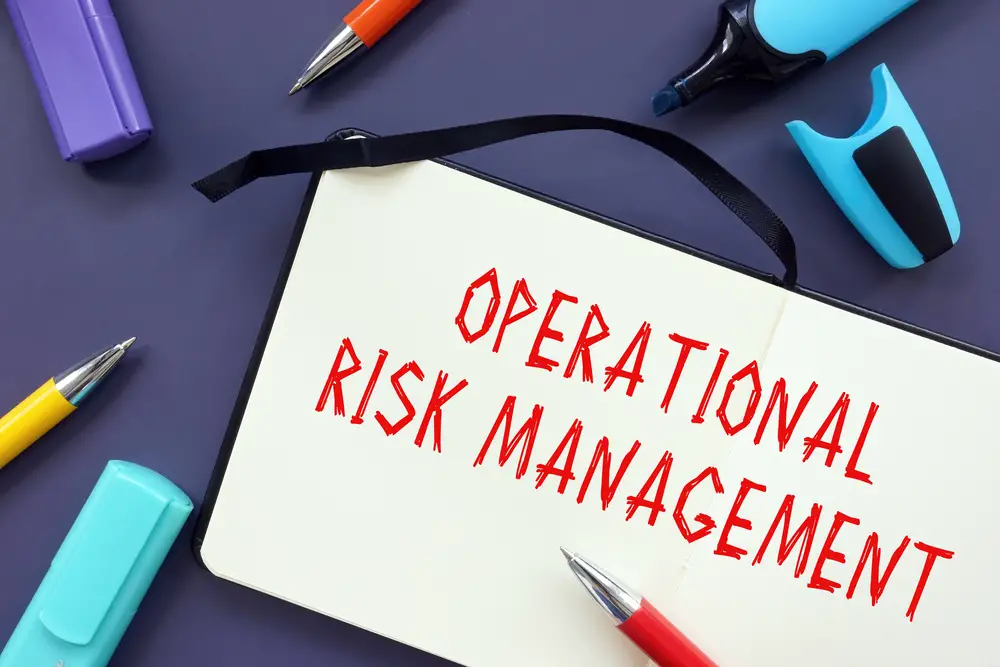Operational risk management is the process of identifying, analyzing, and responding to risks that could adversely impact the achievement of an organization’s business objectives. It includes the assessment of risks related to the efficient and effective operation of organizational processes, systems, and resources.
Operational risk management is critical to an organization’s overall risk management strategy. It helps ensure that risks are identified and managed proactively and cost-effectively. Operational risk management aims to protect the organization’s ability to achieve its business objectives by minimizing the potential for loss or damage due to operational risks.
When developing an operational risk management program, organizations should consider all aspects of their business, including their strategic objectives, organizational structure, processes, and resources.
Furthermore, it is important to integrate operational risk management into all aspects of the organization’s decision-making process. An effective operational risk management program will help organizations make well-informed decisions considering the potential loss or damage associated with various risks. An example of this is operational risk in banks.
In summary, operational risk management is a critical function within any organization that seeks to protect its ability to achieve its business objectives. By identifying and assessing risks related to organizational processes, systems, and resources, organizations can take steps to minimize the potential for loss or damage due to these risks.
When integrated into all aspects of the organization’s decision-making process, operational risk management can help ensure that well-informed decisions are made considering the potential consequences of various risks.
Every day, businesses face various risks that can negatively impact their operations. Operational risk management is identifying, assessing, and controlling these risks to minimize their impact on the business. This article will explore operational risk management and how it can benefit organizations.

What Are Operational Risks?
Operational risks are the risks associated with the day-to-day running of a business. This is the most basic definition of operational risk. They can arise from various sources, such as human error, system failures, and external events. Operational risks can majorly impact a business, causing financial losses, reputational damage, and regulatory penalties. The definition of operational risks is important for risk management policy.
Managing operational risk is a critical part of running a successful business. In the operational risk management, there are several steps businesses can take to manage operational risks, including identifying and assessing risks, implementing controls to mitigate risks, and monitoring risks on an ongoing basis.
Systems & Processes
Systems and processes are the backbone of any organization, large or small. They provide a framework for how tasks are to be completed and help to ensure that work is done efficiently and effectively. Without well-designed systems and processes in place, it would be difficult for any organization to function properly. That’s where the operational risk of the organization comes in.
In many cases, systems and processes are what make it possible for an organization to scale up its operations and meet the demands of a growing customer base. For example, a company that sells products online must have a system for processing and fulfilling orders.
A company that manufactures products will need to have a process for ensuring that its products meet quality standards. In both cases, systems and processes are essential for ensuring that the company runs smoothly and efficiently.
State of Operational Risk Management
Operational risk management (ORM) is a systematic process for identifying, analyzing, and responding to operational risks. It provides a framework for deciding how to allocate resources and manage risks. ORM protects the organization’s people, property, and reputation from exposure to potential losses.
ORM encompasses all activities associated with identifying, assessing, controlling, and mitigating operational risks. It includes developing and implementing policies, procedures, and processes to address operational risks.
ORM is essential to an organization’s risk management program and should be integrated with other risk management activities. The goal of ORM is to reduce the adverse consequences of operational risks and to improve the organization’s overall performance.
Operational risk management has become increasingly important as the number and complexity of risks have increased. Regulatory requirements have also pushed organizations to take a more proactive approach to managing their risks. As a result, many organizations have formalized their operational risk management processes and established dedicated teams to oversee these activities.
Despite these improvements, operational risk management still faces challenges. One key challenge is ensuring that risks are properly identified and assessed. This can be difficult due to the sheer number of risks that exist and the fact that new risks are constantly emerging.
Another challenge is developing effective mitigation strategies. This can be difficult because some risks may be impossible to eliminate completely and because the cost of mitigating a risk may outweigh the benefits.
Despite these challenges, operational risk management is essential for any organization that wants to protect its assets and reputation. By taking a proactive approach to identifying and assessing risks, organizations can develop effective strategies for mitigating them.

What Is the Primary Objective of Operational Risk Management?
The primary objective of ORM is to protect and enhance shareholder value by minimizing potential losses that could result from exposure to operational risks. ORM programs are designed to identify and assess the likelihood and impact of potential loss events and to develop and implement controls to mitigate or eliminate the exposure to those risks.
While ORM programs vary in scope and complexity, they typically involve four key components: risk identification, risk assessment, risk control, and risk monitoring. By systematically combining these four elements, organizations can effectively manage their operational risks and improve their overall performance.
Technology
Operational risk is the risk of loss resulting from inadequate or failed internal processes, people, and systems or external events.
Technology has emerged as a major factor in operational risk in recent years. The increasing reliance on technology in all aspects of business has made organizations more vulnerable to disruptions caused by technological failures.
In addition, the rapid pace of change in the technology sector means that organizations must constantly adapt their systems and processes to stay ahead of the competition. As a result, technology is now one of the leading sources of operational risk for businesses.
While it can provide significant advantages, it also presents unique challenges that must be managed carefully to avoid costly disruptions.
Technology plays a critical role in mitigating operational risk. For example, robust backup and disaster recovery plans can help organizations quickly recover from data loss or system outages. In addition, real-time monitoring and alerts can help to identify potential issues before they cause major problems.
How Many Steps Are in the ORM Process?
The ORM process is a framework for managing online reputation. It consists of six steps: monitoring, assessment, planning, execution, measurement, and continual improvement. Monitoring involves tracking what is being said about you or your business online. The process can also follow the risk management standard of ISO 31000:2018.
Assessment involves analyzing the impact of that information. Planning involves developing a strategy for improving your online reputation. Execution involves putting that strategy into action. Measurement involves assessing the results of your efforts.
And continual improvement means making adjustments to ensure your online reputation remains positive.
Risk Identification
Risk identification is the process of identifying risks that could potentially affect the achievement of an organization’s objectives. It is a key component of risk management and helps organizations make informed decisions about dealing with risks. Identification may involve risks from systems or external events.
Various methods can be used for risk identification, such as brainstorming, interviews, and questionnaires. The most important thing is to ensure that all relevant stakeholders are involved in the process to consider all potential risks. Once risks have been identified, they can be assessed and managed accordingly.
Risk Assessment
A risk assessment is identifying risks to an organization’s assets and systems or from people or technology and then determining the likelihood and potential impact. Risk assessments for operational risk aim to minimize the impact of risks by eliminating them altogether or mitigating their effects.
Risk assessments are essential to any organization’s risk management program and should be conducted regularly. Various methods can be used to conduct a risk assessment, but all should focus on identifying risks, assessing their impact, and developing mitigation strategies. When conducted properly, operational risk assessment can help organizations avoid costly disasters and ensure that their operations run smoothly.
Risk Mitigation
To mitigate these risks, organizations need to have robust processes and procedures in place. For example, they should have clear policies regarding data backup and disaster recovery. They should also invest in quality control measures to reduce the chances of human error.
While it is not possible to eliminate all operational risks, there are many steps that businesses can take to mitigate them. For example, developing robust contingency plans can help ensure operations can continue during disruption and manage operational risk.
Additionally, investing in redundant systems and diversifying supplier networks can help to minimize the impact of any single point of failure. Manage banks’ operational risk through provisions of the Basel committee on banking supervision.
Monitoring
Operational risks are risks that arise from the day-to-day running of a business. They can include data breaches, IT failures, supply chain disruptions, and natural disasters. Given the potentially severe consequences of these risks, it is essential for businesses to monitor them closely.
One way to do this is using key risk indicators (KRIs). KRIs are quantitative or qualitative measures that can be used to assess the level of risk in a particular area. For example, the number of data breaches might be used as a KRI for cyber security risks.
In tracking KRIs, businesses can identify trends and take steps to mitigate risks before they materialize. In today’s uncertain world, effective risk monitoring is essential for any organization that wants to stay ahead of the curve.
What Are Examples of Operational Risk?
Operational risk is the likelihood of loss resulting from broken processes, people, or technology. It is the day-to-day risk of running a business. The banking industry’s operational risk includes loan defaults, cyberattacks, data breaches, and fraud.
Operational risk can be hard to quantify because it covers many possible events. However, under Basel III regulations, banks and other financial institutions must measure and report their exposure to operational risk.
Some common methods of measuring operational risk include value-at-risk models, stress testing, and probability of default models. Operational risk management is identifying, assessing, and mitigating operational risks.
There are many different approaches to managing operational risk, but most involve setting up procedures and controls to minimize losses. Operational risk management is important to any organization’s overall risk management strategy.
What Are the Challenges and Shortcomings of Operational Risk Management?
Operational risk management identifies, assesses, and mitigates risks that could affect an organization’s operations. While it is often seen as a valuable tool for protecting businesses from potential losses, some challenges and shortcomings are associated with operational risk management.
One challenge is that it can be difficult to identify all the risks that could affect an organization’s operations. This is because many types of risks can vary significantly in terms of their likelihood and potential impact. As a result, it can be difficult to identify all the risks that could potentially impact an organization’s operations.
Another challenge is that operational risk management can be time-consuming and resource-intensive. This is because assessing and mitigating risks requires significant time and effort. In addition, organizational resources may need to be devoted to ongoing risk management activities, such as monitoring and reporting on risks. As a result, operational risk management can be a significant commitment for organizations.
Finally, operational risk management can also have some limitations regarding its effectiveness. For example, it is often impossible to completely eliminate all risks to an organization’s operations.
In addition, operational risk management cannot always prevent losses; it can only help minimize them. As a result, operational risk management is not a perfect solution for protecting businesses from potential losses.
However, despite its challenges and limitations, operational risk management remains a valuable tool for many organizations.
Categories of Operational Risk
Operational Risk by People
Operational risk by people category is the risk of loss resulting from inadequate or failed internal processes, people and systems, or external events. This can include fraud, error, theft, data breaches, or natural disasters.
Organizations face operational risk when carrying out their normal day-to-day operations. Operational risk management is identifying, assessing, and managing operational risks.
It includes implementing policies and procedures and setting up systems to monitor risks. Operational risk management helps organizations minimize the impact of operational risks on their business.
Operational Risk by Systems and Processes
Systems and processes are a key part of any organization, and their proper functioning is essential to its success. Consequently, operational risk management must consider the risks associated with these systems and processes. Failures can occur due to errors in design, implementation, or operation.
Additionally, external factors such as cyberattacks or natural disasters can also disrupt system functioning. As a result, it is important to have procedures in place to identify and mitigate these risks.
Operational Risk by External Processes
Operational risk by external processes is a category of operational risk that refers to the risks that come from external sources. This can include anything from supply chain disruptions to natural disasters. While companies can take steps to mitigate these risks, they can never be completely eliminated.
Conclusion
Operational risk management is a critical part of any business. Businesses can protect themselves from costly losses and downtime by taking steps to mitigate risks and plan for potential problems.
In this blog post, we’ve outlined the basics of operational risk and discussed some key strategies businesses can use to reduce their risk exposure. If you want more information on implementing an effective ORM strategy, please don’t hesitate to contact us. Our team would be happy to help you get started!

Chris Ekai is a Risk Management expert with over 10 years of experience in the field. He has a Master’s(MSc) degree in Risk Management from University of Portsmouth and is a CPA and Finance professional. He currently works as a Content Manager at Risk Publishing, writing about Enterprise Risk Management, Business Continuity Management and Project Management.

